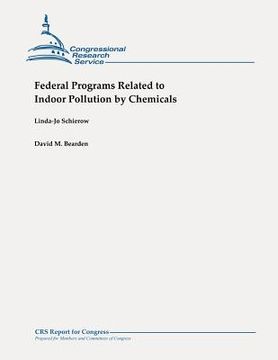Reseña del libro "Federal Programs Related to Indoor Pollution by Chemicals (en Inglés)"
"Toxic" drywall, formaldehyde emissions, mold, asbestos, lead-based paint, radon, PCBs in caulk, and many other indoor pollution problems have concerned federal policy makers and regulators during the last 30 years. Some problems have been resolved, others remain of concern, and new indoor pollution problems continually emerge. This report describes common indoor pollutants and health effects that have been linked to indoor pollution, federal statutes that have been used to address indoor pollution, key issues, and some general policy options for Congress. Indoor pollutants are chemicals that are potentially harmful to people and found in the habitable portions of buildings, including homes, schools, offices, factories, and other public gathering places. Some indoor pollutants, like lead or ozone, are also outdoor pollutants. Others, like formaldehyde or asbestos, are primarily indoor pollutants. Indoor pollutants may be natural (for example, carbon monoxide or radon) or synthetic (polychlorinated biphenyls [PCBs]), and may originate indoors or outdoors. They may be deliberately produced, naturally occurring, or inadvertent byproducts of human activities. For example, they may arise indoors as uncontrolled emissions from building materials, paints, or furnishings, from evaporation following the use of cleaning supplies or pesticides, or as a combustion byproduct as a result of heating or cooking. Some pollution that originates outdoors infiltrates through porous basements (e.g., radon) or is inadvertently brought into indoor spaces, perhaps through heating or air conditioning systems or in contaminated drinking water. Often pollutants accumulate indoors as a result of deliberate improvements to increase energy efficiency, for example by reducing building permeability to air. The health risks posed by indoor pollutants have concerned scientists for many years. Because people spend a high percentage of their time indoors, and concentrations of pollutants often are higher in indoor air than outdoor air, the risks due to exposure can be higher than many other environmental risks. Moreover, a 2011 report by the Institute of Medicine warns that many indoor environmental quality problems might get worse if adaptations to climate change are made without better information and programs aimed at pollution prevention. No federal agency has broad authority concerning pollution indoors. Nonetheless, numerous federal agencies have some authority to control particular indoor pollutants or sources of pollution or the quality of indoor environments in a particular class of structures. For example, the U.S. Environmental Protection Agency (EPA) has authority under the Toxic Substances Control Act (TSCA) to study and issue safety guidelines for radon and lead-based paint hazards. The Comprehensive Environmental Response, Compensation, and Liability Act (CERCLA) authorizes EPA also to respond to releases of hazardous substances into the outdoor environment which may migrate indoors. The Consumer Product Safety Commission (CPSC) has authority to set emission limits for, and to restrict uses of, certain chemicals in consumer products. The Department of Housing and Urban Development (HUD) and the General Services Administration (GSA) regulate some indoor pollutants in federal buildings. These and other agencies have conducted research to examine the risks of various indoor pollutants. Concerns about coordination of federal efforts to address indoor pollution have been expressed by the general public, the U.S. Government Accountability Office (GAO), and the U.S. Congress. But any federal response to indoor pollution is complicated by the need to coordinate with local and state governments as well to address potentially overlapping jurisdictions and resources. Options for Congress range from maintenance or improvement of the status quo to reduction or expansion of federal involvement in research, information dissemination, or regulation.

